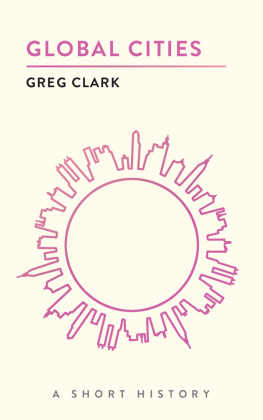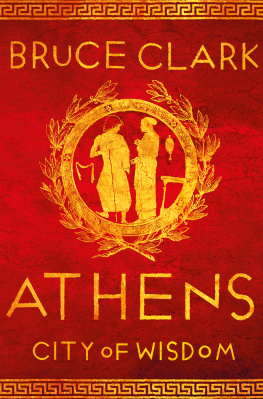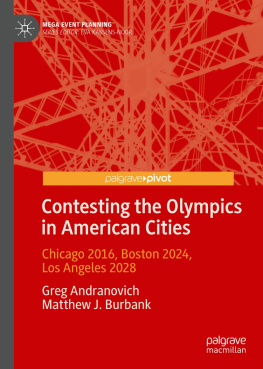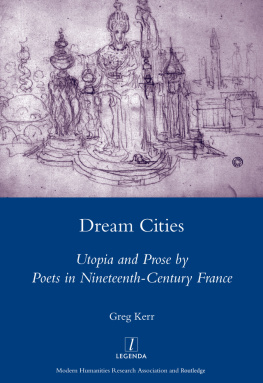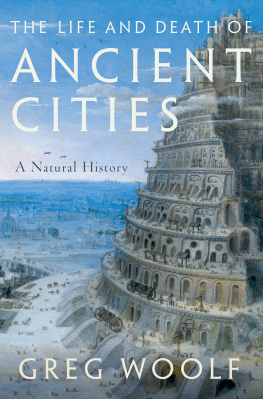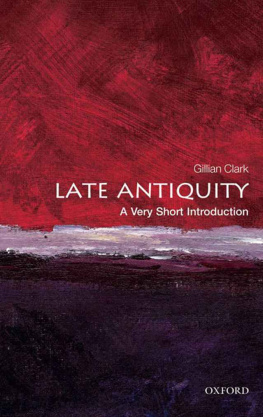A SHORT HISTORY
GLOBAL CITIES
Greg Clark
BROOKINGS INSTITUTION PRESS
Washington, D.C.
Copyright 2016
THE BROOKINGS INSTITUTION
1775 Massachusetts Avenue, N.W., Washington, D.C. 20036
www.brookings.edu
All rights reserved. No part of this publication may be reproduced or transmitted in any form or by any means without permission in writing from the Brookings Institution Press.
The Brookings Institution is a private nonprofit organization devoted to research, education, and publication on important issues of domestic and foreign policy. Its principal purpose is to bring the highest quality independent research and analysis to bear on current and emerging policy problems. Interpretations or conclusions in Brookings publications should be understood to be solely those of the authors.
Library of Congress Cataloging-in-Publication data are available.
ISBN 978-0-8157-2891-7 (pbk : alk. paper)
ISBN 978-0-8157-2892-4 (ebook)
9 8 7 6 5 4 3 2 1
Typeset in Sabon
Composition by Westchester Publishing Services
CONTENTS
ACKNOWLEDGMENTS
I WAS DELIGHTED WHEN my colleagues at the Brookings Metropolitan Policy Program and Global Cities Initiative proposed the idea of this book. Writing Global Cities has been both a significant challenge and an honor. I am very grateful to colleagues at the Brookings Institution in Washington, D.C., who supported me and encouraged me in this endeavor, especially Alan Berube, Marek Gootman, Joe Parilla, and Elizabeth Patterson. I am also very grateful to colleagues at the Brookings Institution Press for the calm and professional manner in which they helped plan the text and its launch. My appreciation goes to Valentina Kalk, Carrie Engel, and Janet Walker.
I must also thank my colleagues at JPMorgan Chase, without whom this book would not have been possible. Their partnership and generous support through the Global Cities Initiativea joint project of the Brookings Institution and JPMorgan Chasehas helped metropolitan leaders understand their global starting point and advance and grow their regional economies by strengthening international connections and competitiveness. Hopefully this book will provide an additional resource for their efforts.
Back in London, my home team of Dr. Tim Moonen, Emily Moir, and Jonathan Couturier aided considerably in assembling the case studies, refining the story, proofreading the manuscript, and telling me to keep going. Without their contributions, this book could not have been written.
The text benefited substantially from several reviews by knowledgeable individuals who were generous and supportive, and who also made multiple suggestions for improving the text, all of which I adopted. I am very grateful for their thoughtful contributions.
I must also record my personal thanks to those whose work is cited in this book. There is a large and substantial literature on global cities, globalization, urbanization, and trade, and this book has benefited greatly from the expert scholarly work of others.
Last, the driving motivation for accepting the invitation to prepare this book was my extensive working relationships with practitioners and scholars in more than 100 cities globally. My overarching desire was somehow to translate our rich conversations we enjoy into a text that would crystallize some of what we jointly know. To those friends, thank you.
London, 2016
ONE NAVIGATING GLOBAL CITIES
A SHORT HISTORY OF global cities is hard to write because the history of global cities is a long one. But what a story it is!
From the founding of the great cities in antiquity, well before modern nation-states emerged, through to the rise of the digitally driven global cities of today, with their fresh livability equations and innovation ecosystems, the history of global cities is deeply entwined with the story of human civilization. In many ways, the current cycle of urbanization invites a fresh look at the primacy of cities that is observable in this history.
This short journey through the histories of global cities explores key aspects of the evolution of global cities in the past and the prospects for such cities in the future. (For clarity and consistency, the term global city rather than world city is used throughout the book.) It does not try to offer a new definition of global cities; the work is concerned with observed history rather than with theory. But I have sought to reflect on the assessments that others have made as part of that history. To that end, five key features that manifest over time in cities that develop roles beyond domestic markets warrant mention. These are:
- cross-border trade through connectivity,
- diverse and entrepreneurial populations,
- innovation and influence over systems of exchange,
- the discovery of new markets, products, and practices, and
- geopolitical opportunity.
Through these features we can chart the evolution of globalizing cities in the interest of discovering their DNA, and allow the cities to tell their own stories as parts of one continuous history (box 1-1).
The expression global cities is of recent coinage, but the idea is not new, and this book goes back into history to find its origins. Today, three big phenomena are helping to focus interest and attention on global cities and their multiple functions.
First is the rising number of global cities . There is a new generation of globalizing cities today, and many more global cities exist than in previous cycles of globalization. Some studies identify more than 150 substantially globalized cities among more than 500 urban areas with a population in excess of 1 million people.cultural character. But the number of cities whose economies are international in their orientation is sufficiently large that it makes sense to talk about globalization as driven by, and produced through, the activities of global cities.
BOX 1-1. THE REVEALED INGREDIENTS OF GLOBAL CITIES
Trade and connectivity
Diverse and entrepreneurial populations
Innovation and influence
Discovery of new markets, products, and practices
Geopolitical opportunity
Second is the phenomenon of metropolitanization , The twenty-first century is the metropolitan century, and in many respects the story of global cities is now one of larger urban agglomerations, or what are called metropolitan areas (metros for short). Growing cities have spilled over their old boundaries and accidentally have become complex functional areas that compose a single economic unit, even as older jurisdictional boundaries are maintained. Over the last century many cities have been on this trajectory of metropolitan dispersal, but metropolitanization now also denotes a way in which cities can absorb population and economic growth within several connected population centres and pursue reurbanization and densification as they seek to become more managed metropolises. With metropolitanization and reurbanization at the fore, it is expected that the worlds population growth and settlement pattern will eventually level off at more than 80 percent urban by 2100. Barring other disruptors, the pattern of cities globally and the infrastructure platforms that support them will be largely set for the next 100 years that follow. So the cities that rise to prominence in the coming years and find their way to global influence and relevance have an opportunity to sustain advantages for a long time to come.
And third, global economic dynamics are changing . Since 2008 a major shift has taken place as the global economy reorganizes after the banking crisis and worldwide recession. The worlds center of gravity is rapidly moving east and south. This creates new market opportunities for cities that were on the edge of things, and forces cities in more established parts of the world to fight to remain relevant and influential. As prosperity becomes more evenly shared across (if not within) nations, the mobility and reach of the new global middle classes underwrite a much bigger reservoir of consumer demand. The extension of prosperity also means that the economic and spatial balance of nations is being reshaped and is allowing more medium-sized and second-tier cities to acquire and develop complementary trade specializations.

